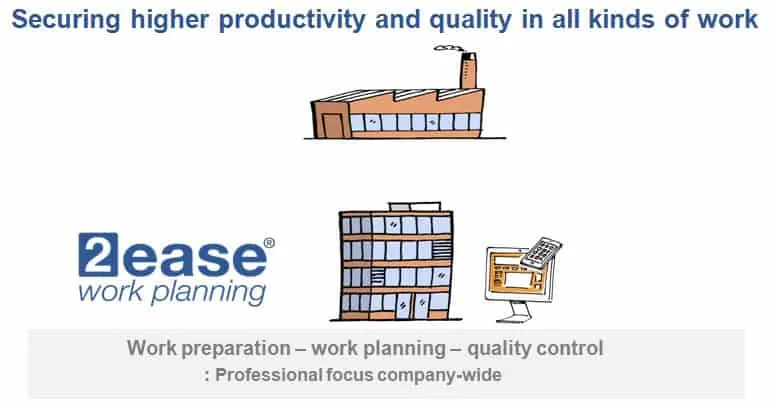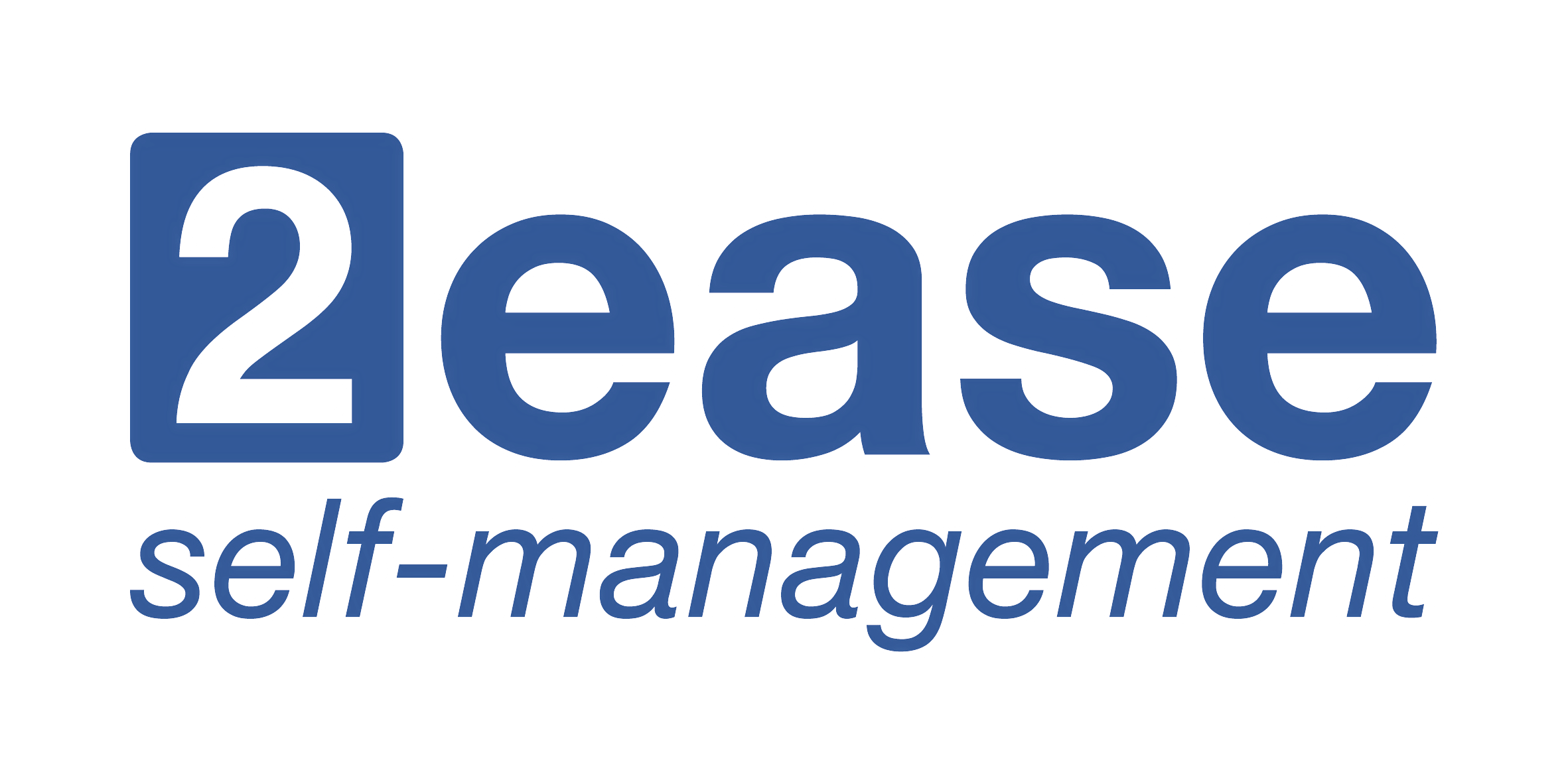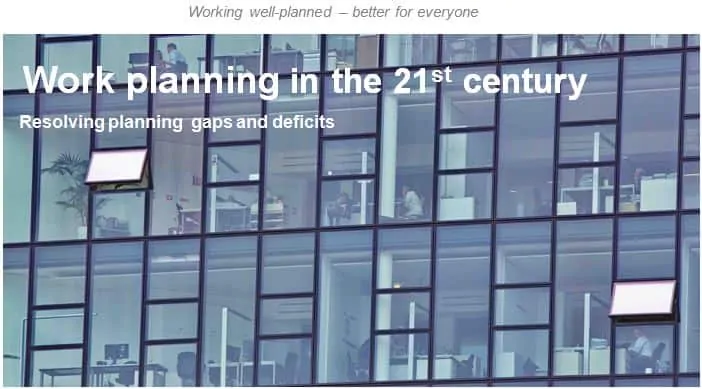
Professional Work Planning | Planned Approach
1. Deficits in Work Planning, Preparation, and Quality
Industrial – A professionally planned line of action is normal
Who is doing what, when, how long, and by what means? This was a fundamental question for employers in the industrial 20th century. The answer to said question was crucial for economic success. That is why work planning, work preparation, and work quality were widely discussed topics. Companies were striving to master their value-added process.
Post-industrial – A haphazard line of action has become acceptable
Who is doing what, when, how long, by what means, and with whom, as well as for whom? This is the question for added value in the post-industrial 21st century’s interconnected, cooperative work environment. To have this intangible added value under full control, employers have to pay special attention to the work planning, work preparation, and quality of work of those working behind screens. But the opposite is the case: they leave everyone to fend for themselves.
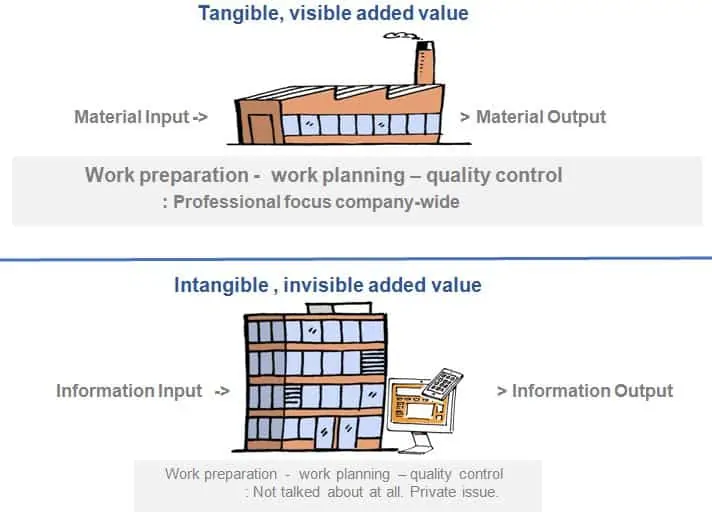
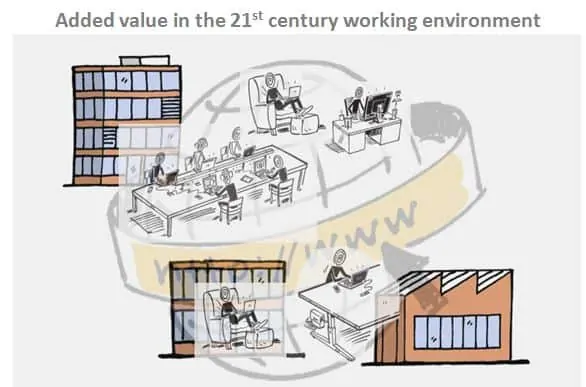
Those working behind screens in offices are supposed to be responsible for their own work preparation and work planning. Work quality is neither defined, nor monitored, nor demanded. Everyone is free to do, or not do, as they please. Work planning, work preparation, and work quality have become private issues for each employee.
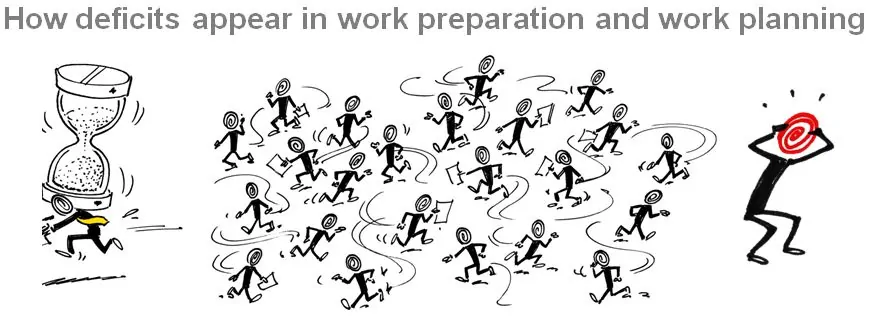
In a post-industrial work environment, where each person is reliant on many others to get their work done, this inevitably leads to excessive demand, frustration, and stress. A single person with a lack of work preparation, no work planning, and low quality work can cause others to become unproductive and unreliable. Those coworkers will then try to compensate for that by working overtime and in a rush.
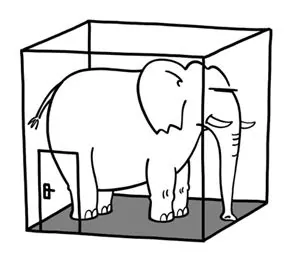
Deficits in work preparation, work planning, and work quality lead to systematic excessive demand, frustration, and stress that is in no way caused by a lack of expertise or an oversized workload. These deficits, although obvious, are not at all talked about. It’s too personal. These deficits are the elephant in the room of today’s work environment.
Recognizing the lack of planning in companies as a lack of leadership
2. Planning Deficits for Employers
Periodic reviews and planning on all levels of an organization are core elements of professional leadership in any company. Plans are made and constantly studied for divergences in order to make adjustments as needed. In review meetings, priorities and deadlines are set, and the line of action, as well as resource planning of an organizational unit, are updated.
Actual operational work still happens outside of meetings. Each member of an organizational unit (board, department, project team, etc.) has to make sure that they manage their necessary work within their workdays, and that all colleagues or external partners receive their appropriate work contributions in a timely manner.
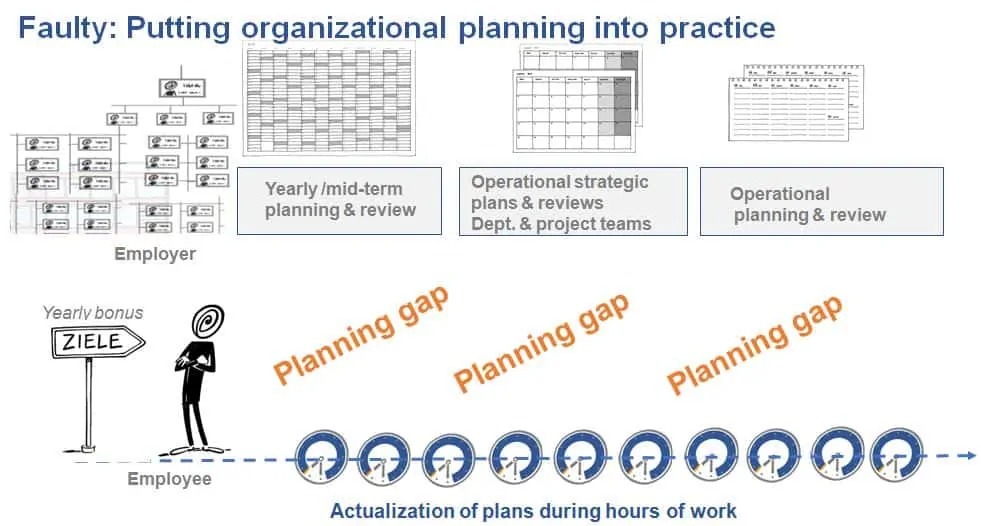
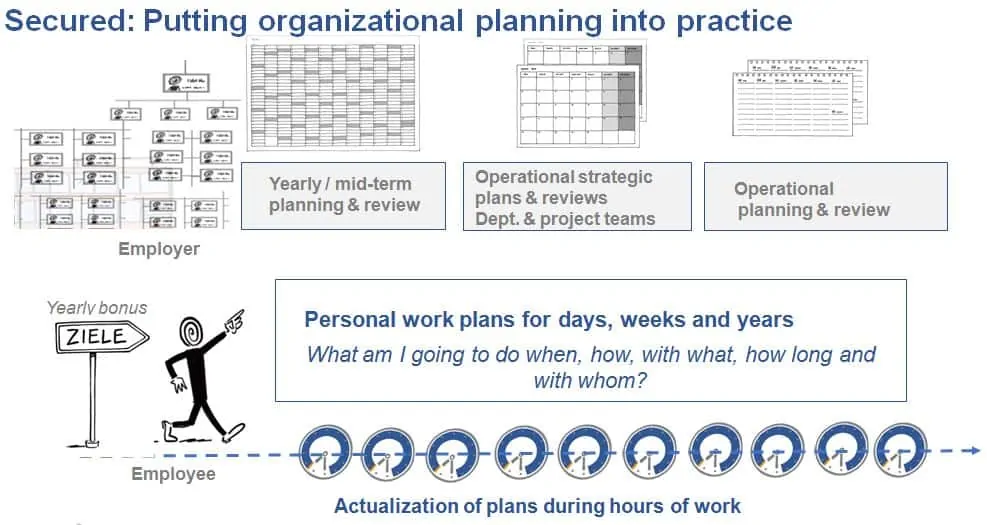
Every employee can be a part of multiple organizational units at once, each with different tasks and goals. The employee is expected to think and participate in every single one. The time for that has to, somehow, be allocated alongside their reactive, operational day-to-day business.
The persons in charge, e.g. project managers, try, as leaders, to influence “their” project staff to devote enough time and attention to working on their project. The better a manager can do this, the more successful they are going to be.
Thus, from the perspective of a determined project manager, it is advisable to steer your project staff as intensely as possible. Aside from the standard personal e-mail, there are also many project management tools that automatically send push messages to team members with the purpose of encouraging the recipient to work on the project. Another option for heavy influence is to increase the frequency of team meetings. This will, however, cost each employee even more time and attention, which will in turn take time and attention away from getting their work done. Alongside their work on the plans and goals for these multiple organizational units, each employee still has to do the work coming from day-to-day operational business.
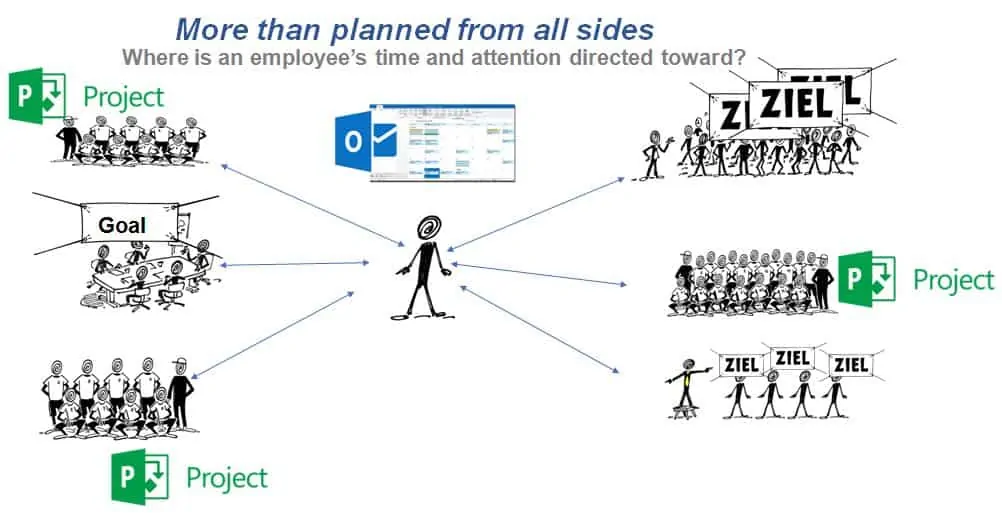
This is how employees become restless. They don’t follow a professional plan of what they have to do, when, how, with whom, how long, and for whom. They never made one. Without a plan, there is no plan review. However, working with a plan and making reviews regarding progress and divergences is a sign of professional work. It facilitates productivity, reliability, and quality. This also holds true for the smallest organizational unit of each company, the individual worker. Leaving this crucial unit “individual worker” without plans and reviews is the systematic planning deficit of employers.
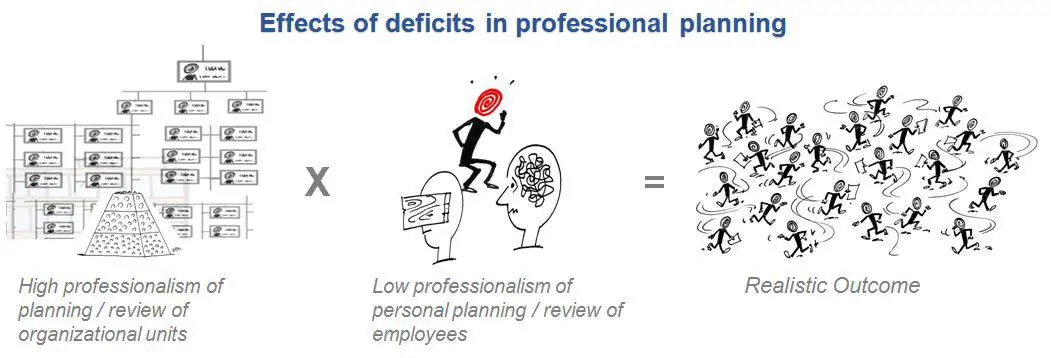
When employees have a personal work plan for days and weeks, they can coordinate and cooperate with others. Transparent, systematic work planning and review is a practical foundation for meetings between workers and managers. To achieve better personal work planning, a boss turns into a mentor. It’s a new way of employee leadership. Plan-based leadership. The 21st century’s ideal form of leadership for workers behind a screen.
Feeling better in work days and work life of the 21st century
3. Planning Deficits for Employees
Your time and attention are finite yet sought-after resources:
- Operational daily work and compulsory tasks need time and attention.
- Changes in the environment and area of expertise need time and attention.
- Changes in vocational safety, risks, and chances need time and attention.
- Personal development and pursuit of one’s own goals needs time and attention.
- Different roles making up organizational units (project teams, boards etc.) need time and attention.
- Digital offers across all channels and devices need time and attention.
- One’s private life needs time and attention.
You never have enough time and attention for everything. That’s why you should plan on how to utilize your time and attention. Create a plan for each day and week.
You are more likely to remember and do things that you have defined and made note of in a personal plan. Everything that you don’t plan is controlled by coincidence, motivation, machines, etc. You use your time without knowing whether or not it will be beneficial.
(German web page for the book „Professionelles Selbstmanagement” by J.Lauber www.selbstmanagement.co )

Planning your time and attention professionally is the foundation of professional self-management. With it, you can make sure that everything will be alright for you and everyone you care about in the challenging work environment of the 21st century.
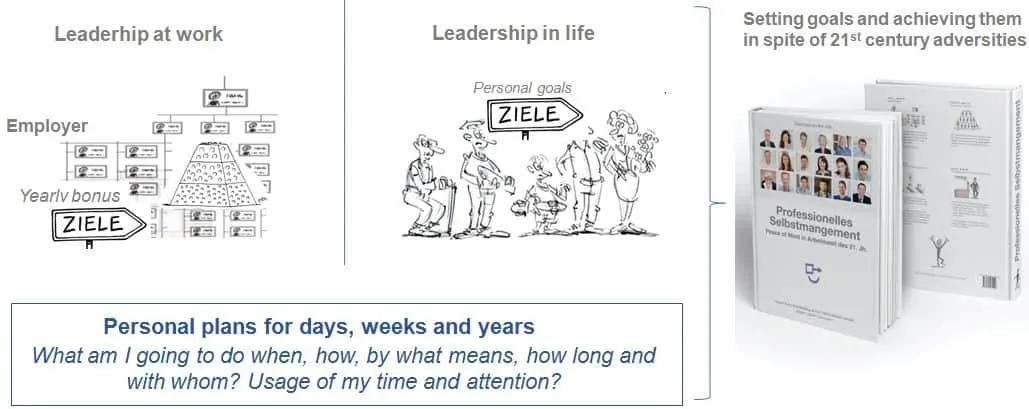
Making professional planning possible for every person and organisation
4. Resolving Professional Planning Deficits: Win-Win for Everyone
Having a personal plan for days and weeks means being able to plan the use of your time and make a suitable review.
That is what both employers and employees are interested in. Planning deficits are systematically resolved. People who plan and work more systematically are more productive and more valued in a private as well as professional environment. Well-planned private and professional goals are achieved more easily and securely. If you always have a plan, you’ll have more peace of mind and greater confidence.
Companies whose employees are more productive and more valued in their day-to-day work also become more productive and valued as a whole. Working with a plan means a win-win for all stakeholders. Enabling each interested person to work with a plan is the business purpose of 2ease AG.
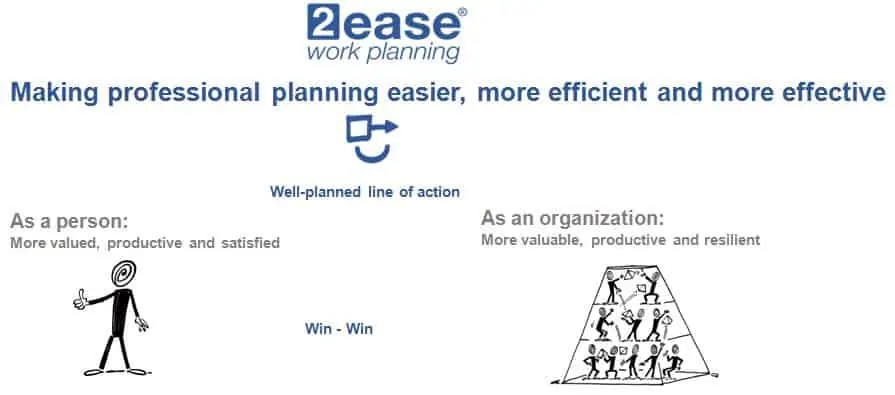
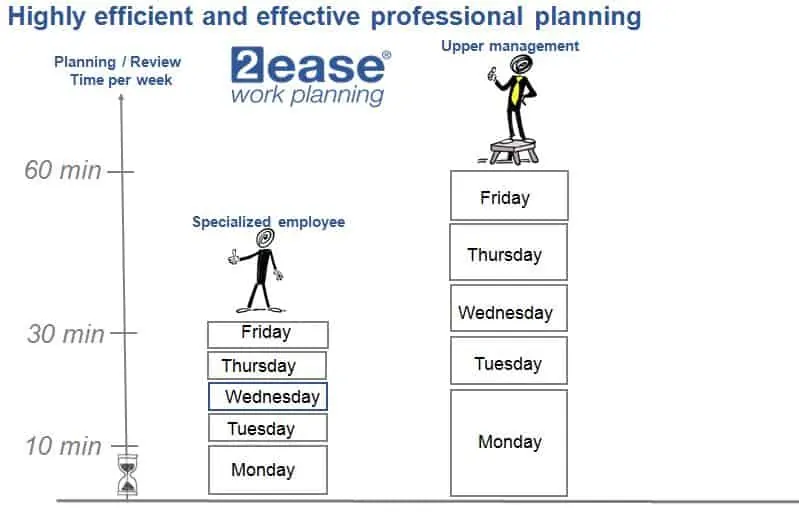
You only need a little time for professional planning. A few minutes of focused and systematic personal planning each day is enough. It’s all the time you need to resolve planning deficits and become significantly more productive.
